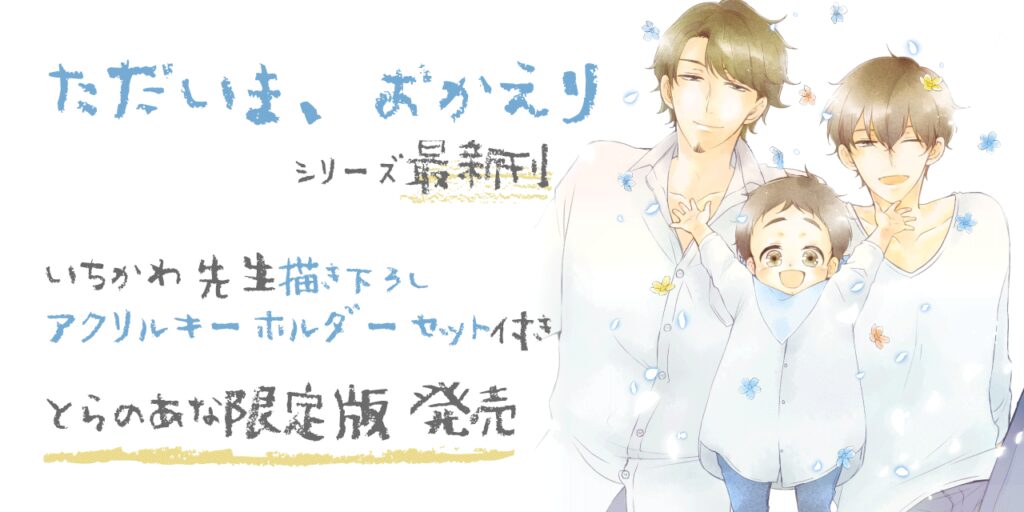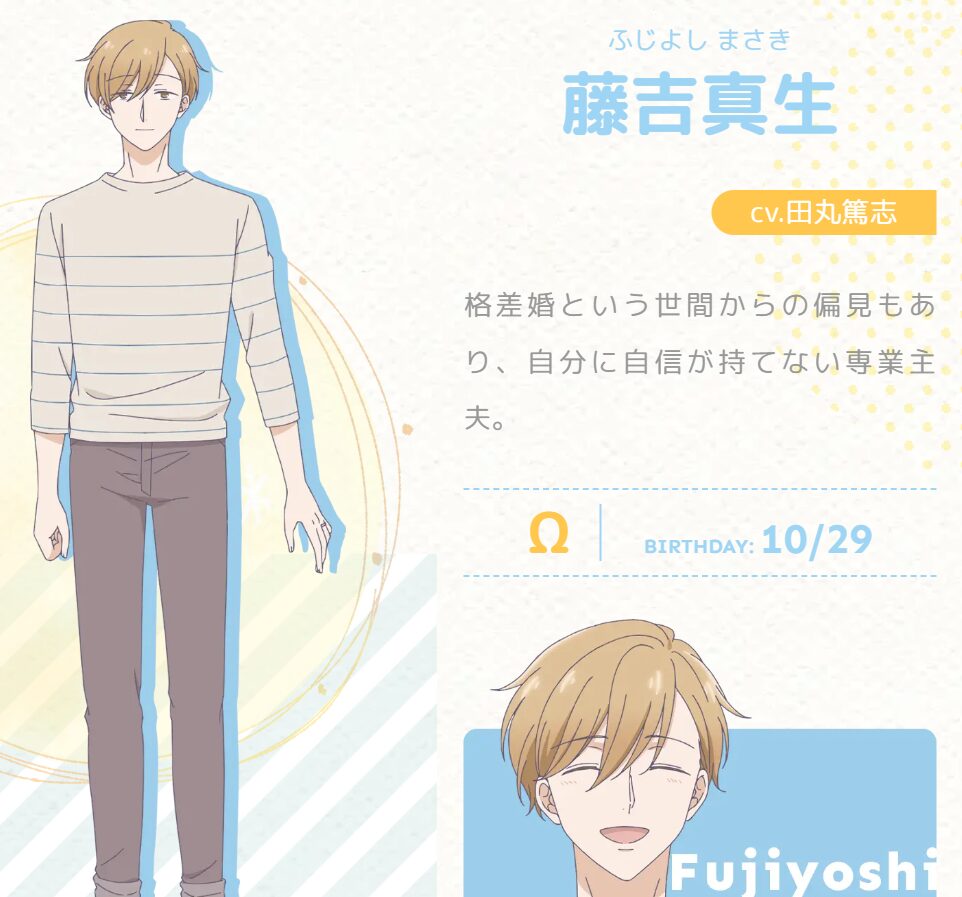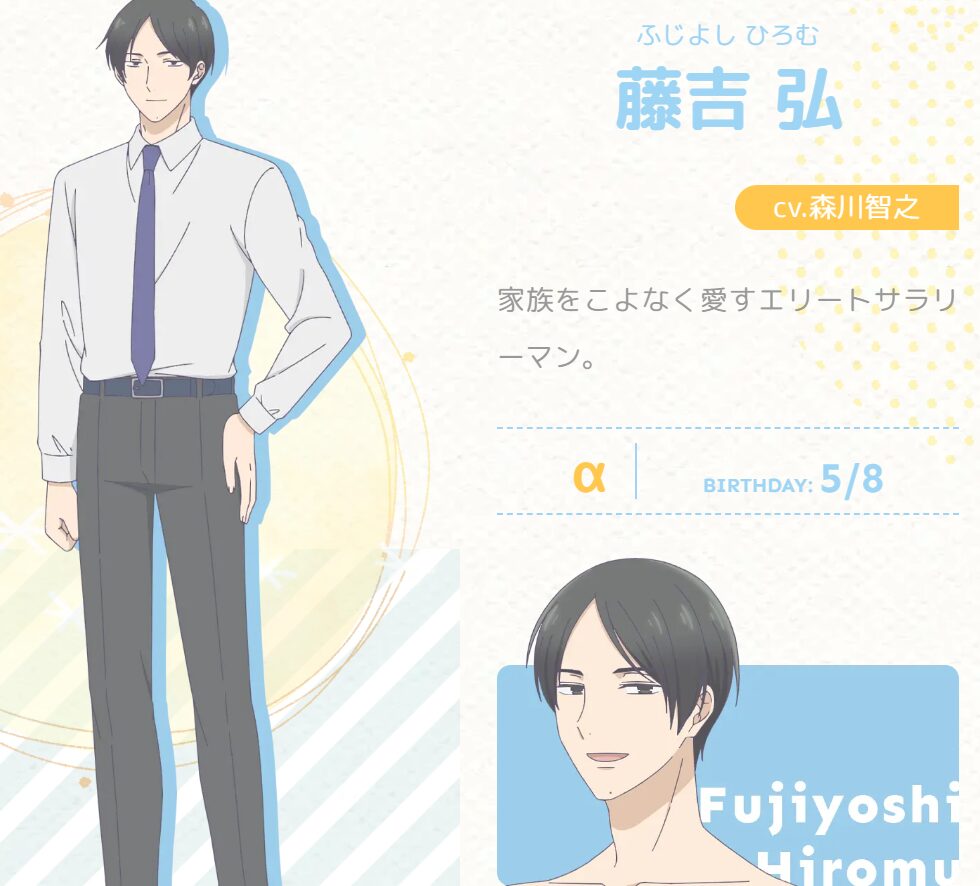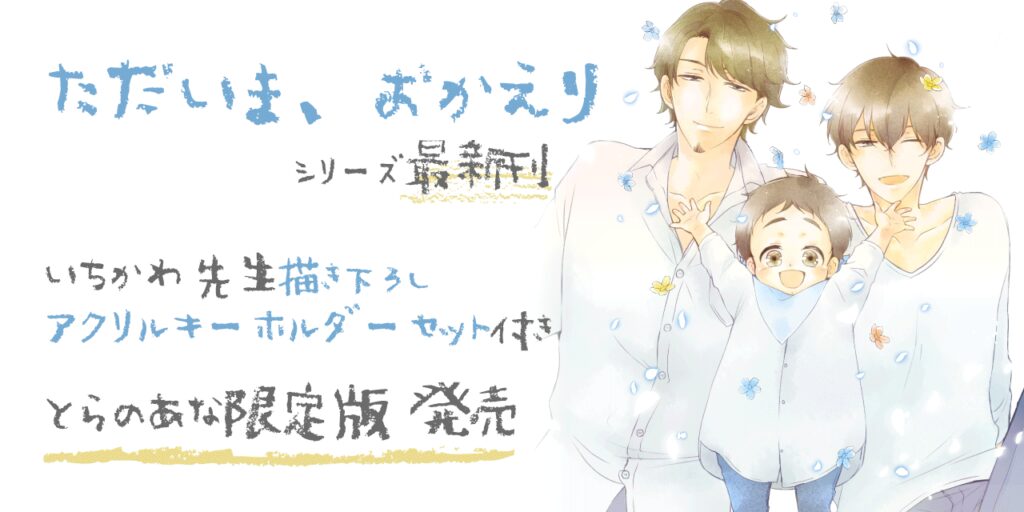Introduction
Welcome Home, Now and Forever
“Tadaima, Okaeri.”
These are the words that Japanese people use to welcome someone home. It is more than just a greeting; it is a way of expressing warmth and sense of security, a feeling of being at ease and secure.
Of course, being Japanese, I use it every day.
Welcome Home, Now and Forever is an anime that embodies this warmth and sense of security. It is a story about the bonds of family and friendship, and the importance of having a place to call home.
Are you at a crossroads in your life?
Are you struggling to find your place in the world?
Have you lost someone important to you and feel lost and alone?
If you answered yes to any of these questions, then Welcome Home, Now and Forever is the anime for you. This anime will light a fire in your heart and give you hope.
Come, enter the world of Welcome Home, Now and Forever!
Through this anime, you too will surely find your place to call home.
Official website :https://tadaoka-anime.com/
official X:https://twitter.com/TadaOka_anime
description of works

“Tadaima, Okaeri” is a Japanese manga by Ichikawa Ichi set in the Omegaverse, focusing on the family life of an α and Ω couple and their son.
The story mainly revolves around Fujioshi Masao, who becomes a househusband after marrying his beloved husband, Fujioshi Hiro, and their nearly two-year-old son, Teru.
They move to a suburban town facing societal prejudice due to their “gap marriage” and Masao’s insecurities.
However, with the support of Hiro and Teru, Masao gradually becomes stronger.
The narrative delicately portrays the Fujioshi family’s warmth, their growth, conflicts, and romantic entanglements, inviting readers into their tender moments.

As of February 2024, the series has surpassed 3.6 million copies in circulation. Given its popularity, an anime adaptation has been announced,
set to air in April 2024 on TOKYO MX, MBS, BS Nippon Television, Animax, and exclusively stream on FOD.
A key highlight of “Tadaima, Okaeri” is the depiction of a loving family bound by strong ties, offering a comforting narrative that reassures readers even when tensions briefly arise.
The endearing interactions among the three family members, focusing more on familial love than romance, provide a heartwarming experience throughout.
Synopsis.
Masao Fujioshi became a househusband after marrying his beloved husband, Hiro Fujioshi.
They were blessed with a son, Teru, who is about to turn two years old, and have moved to a suburban town.
Facing societal prejudice due to their “gap marriage,” Masao struggles with self-confidence. There are times when he is caught in anxiety and sadness,
but with the support of Hiro and Teru, he gradually becomes stronger.
The story invites us to witness the Fujioshi family becoming even more of a “family” than the day before, carrying gentle feelings in their everyday moments.
Introducing the main characters

Based on the information provided and available resources, here are brief introductions to the main characters of “Welcome Home”
Masaki Fujiyoshi (藤吉 真生, Fujiyoshi Masaki)

He becomes a househusband after marrying his husband, Hiromu. Facing societal prejudice due to their gap marriage and struggling with self-confidence, Maski’s journey is one of growth and overcoming personal insecurities with the support of his family.
Hiromu Fujiyoshi (藤吉 弘, Fujiyoshi Hiromu)

Hiromu is Masli’s beloved husband. He is supportive and plays a significant role in Maski’s journey towards gaining confidence. His relationship with Maski and their son, Hikari, highlights the strong familial bonds that the story emphasizes.
Hikari Fujiyoshi (藤吉 輝, Fujiyoshi Hikari)

The nearly two-year-old son of Maski and Hiromu. Hikari’s presence adds to the family’s dynamics, bringing joy and challenges typical of parenting, further enriching the family’s narrative.
These characters form the core of “Welcome Home,” depicting a family navigating societal challenges, personal growth, and the joys and trials of everyday life.
Their story is not just about the struggles they face but also about the warmth and love that bind them together,
offering a heartwarming exploration of family life in the context of the Omegaverse.
The highlights

The highlights of “Welcome Home” center around its heartwarming depiction of family life within the Omegaverse, focusing on the following aspects
- Strong Familial Bonds: At its core, “Welcome Home” explores the deep connections between family members. The story of Maski, Hiromu, and their son Hikari is a testament to the power of love and support within a family, navigating the challenges of life together.
- Personal Growth and Overcoming Challenges: The series adeptly portrays Maski’s journey of self-discovery and confidence-building. Facing societal prejudice and personal insecurities, his growth, supported by his husband Hiromu and their son, highlights resilience and the importance of family support.
- Heartwarming and Relatable Storytelling: The everyday moments of the Fujioshi family, filled with love, laughter, and the occasional struggle, make the narrative relatable. It’s a story that celebrates the joys and trials of family life, resonating with readers looking for both warmth and depth.
- Omegaverse Setting with a Unique Twist: While set in the Omegaverse, “Welcome Home” focuses more on the emotional and relational aspects rather than the dynamics often emphasized in this genre. It presents a fresh take on the setting, prioritizing the human (or character) experience over the typical hierarchical structures.
- Visuals and Character Dynamics: The manga’s artwork complements the story’s tone perfectly, with expressive characters and scenes that capture the warmth of the Fujioshi family’s life. The dynamics between the characters, filled with gentle humor and affection, add a visual charm that enhances the narrative.
These elements together make “Welcome Home” a compelling read for those interested in stories that delve into the essence of family,
love, and personal growth within an imaginative setting. The series has also garnered attention for its sensitive and uplifting portrayal of family life, making it a standout work in the Omegaverse genre.
Style and Theme

The style and themes of “Welcome Home” are centered around family bonds, personal growth, and overcoming societal prejudice, all set against the backdrop of the Omegaverse.
The work is known for its warm storytelling, focusing more on the relational and emotional exchanges between characters than on the hierarchical dynamics typically associated with the genre.
Style
- Heartwarming Family Drama: It delicately depicts the minor events and affectionate interactions within a family’s daily life. The characters’ emotions are finely expressed, offering readers a heartwarming experience.
- Realistic Emotional Expression: The story features detailed portrayals of the characters’ internal struggles and joy towards happiness, allowing readers to deeply empathize with them.
- Clear Visual Style: The bright and accessible art style enhances the story’s warmth. Characters are designed to be adorable and expressive, capturing subtle emotional shifts.
Themes
- Family Bonds: The story mainly revolves around how a family supports each other and strengthens their bonds in the face of various difficulties. It emphasizes the importance and power of familial love.
- Personal Growth and Self-Acceptance: Through characters like Maski, the narrative explores self-acceptance and personal growth. Despite dealing with societal prejudice and self-doubt, he gradually gains confidence with the support of his loved ones.
- Fighting Societal Prejudice: Set within the Omegaverse’s class system and gender bias, the story showcases the characters’ journey to confront and overcome these prejudices, delivering a message of diversity and inclusiveness.
“Welcome Home” conveys the importance of family, the significance of self-acceptance, and the hopeful message that no obstacle is insurmountable with love and support, through its style and themes.
Evaluation in Japan

Tadaima, Okaeri is a Japanese manga series written and illustrated by Ichikawa Ichi.
The series has received high praise from readers for its heartwarming story of family love and friendship.
Here are the main points of praise:
- Realistic character portrayal: The emotions and struggles of the characters are depicted realistically, making them relatable to the reader.
- Heartwarming story: The story of the bonds of family and friends, and the importance of having a place to call home, resonates with the reader’s heart.
- Beautiful art: The characters’ expressions and backgrounds are drawn in detail, providing a sense of calm to the reader.
Here are some comments from readers:
- “I re-realized the importance of family.”
- “This was a heartwarming story with a great aftertaste.”
- “The art was beautiful and I felt healed just by looking at it.”
On the other hand, there are also some opinions such as:
- “The story development feels a bit slow.”
- “The characters’ personalities feel shallow.”
Overall, “Tadaima, Okaeri” can be said to be a heartwarming work that provides a sense of sense of security, a feeling of being at ease and secure, to the reader.
Evaluation:
- Story: ★★★☆☆
- Character Portrayal: ★★★★☆
- Art: ★★★★☆
- Aftertaste: ★★★★☆
Recommendation: ★★★★☆
This work is recommended for those who like stories about family love and friendship.
Staff and Cast
Cast of Tadaima, Okaeri
- Masao Fujioshi: Atsushi Tamaru
- Hiro Fujioshi: Tomoyuki Morikawa
- Teru Fujioshi: Atsumi Tanezaki
- Haru Fujioshi: Konomi Kohara
- Yuki Hirai: Taku Yashiro
- Tomoya Matsuo: Hiroshi Kamiya
- Akito Mochizuki: Shintaro Asanuma
- Mitsuru Mochizuki: Kaede Hondo
- Yuto Matsuo: Toshiki Masuda
- Hidehito Matsuo: Kazuyuki Okitsu
Staff
- Director: Shinji Ishihira
- Assistant Director: Juri Matsamura
- Series Composition: Yoko Nakamura
- Character Design: Mina Osawa
- Art Director: Masaki Kudou
- Color Design: Yui Azumi
- Director of Photography: Shinya Kondou
- Editor: Keiko Onodera
- Sound Director: Shoji Hata
- Sound Effects: Noriko Izumo
- Music: Megumi Ohashi
- Music Production: Nippon Columbia
- Animation Production: Studio DEEN
Broadcast Information
- TV ONAIR – TOKYO MX Starting April 8th (Monday), every Monday at 24:30
- MBS Starting April 12th (Friday), every Friday at 26:53
- BS Nippon Television Starting April 10th (Wednesday), every Wednesday at 25:00
- Animax Starting April 13th (Saturday), every Saturday at 23:00
- STREAMING – Exclusive unlimited streaming FOD Starting April 8th (Monday), every Monday at 24:30
Finally.
“Tadaima, Okaeri” delivers a heartwarming message through its tale of family bonds and growth.
Surpassing the confines of the Omegaverse genre, it portrays the importance of mutual support, resonating with viewers by urging them to cherish connections with family and loved ones.
Its profound narrative and tender moments are likely to leave a lasting impact on many.
I encourage readers to explore this beautiful story for themselves and discover the meaning of treasuring each day, just as it unfolds within this remarkable work.






コメント